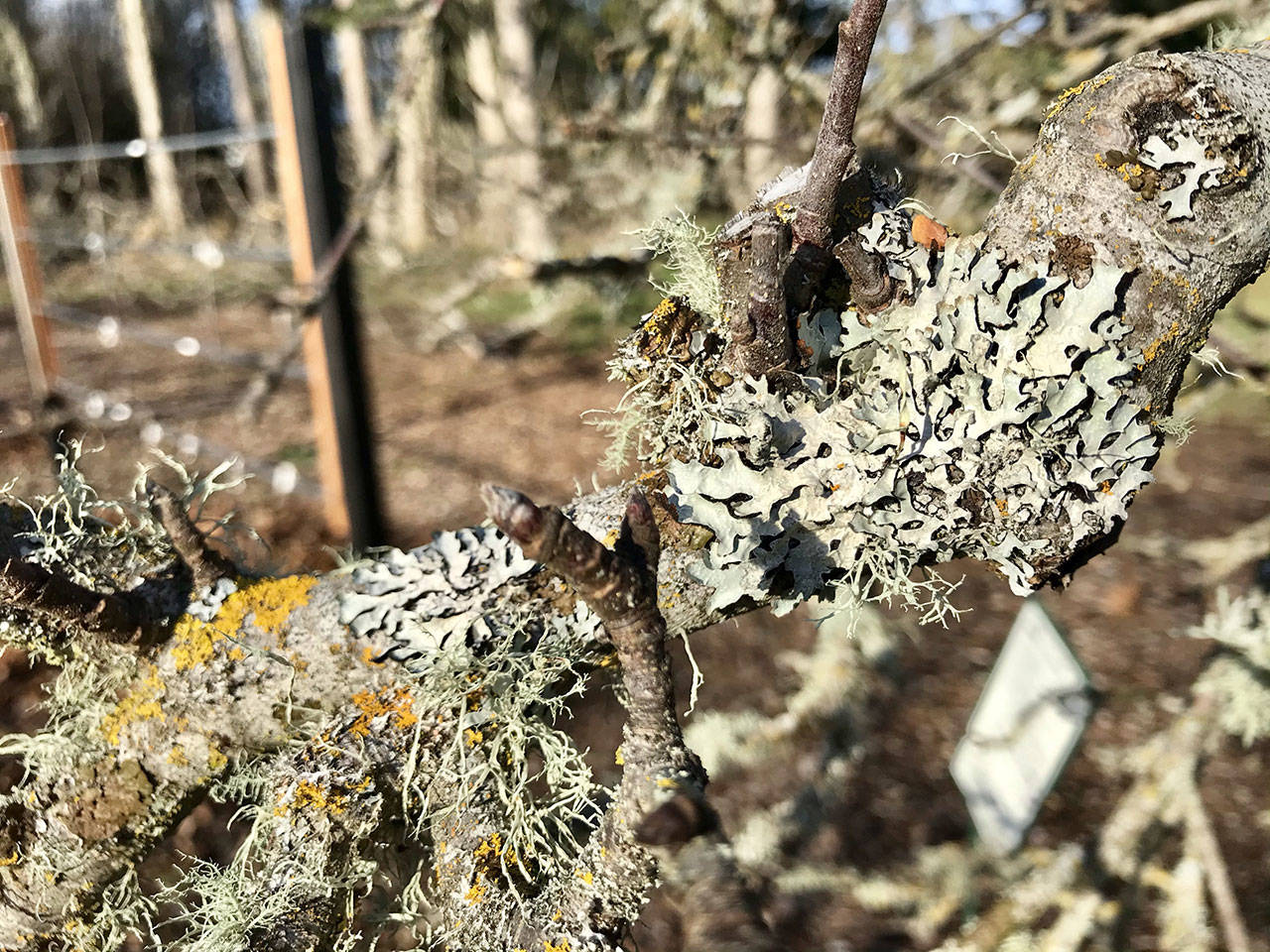Welcome to the WSU Master Gardener plant clinic. Today’s plant clinic question is: What is all the gray-green scaly growth on the bark of my trees?
This is a common question that comes into the Master Gardener plant clinic, especially this time of year. Some people correctly recognize these growths as lichen.
They are not actually plants but fungus that lives in a symbiotic relationship with one or more other organisms, primarily algae. Lichens draw their nutrients and moisture from the air. The alga provides food via photosynthesis and in return the fungi provide moisture.
Don’t be alarmed that they are classified as fungus; this is not a fungal disease. In fact, lichens do not harm your plants and they are not parasitic. They don’t have roots and only use plants, trees, and other surfaces as a substrate. They do not damage the bark or rob the plant of moisture or nutrients.
In fact, the presence of lichen is a good environmental sign, because since they don’t tolerate air pollution, their presence is an indication of good air quality.
There are hundreds of varieties of lichen in the Pacific Northwest and they come in a host of different shapes, forms and colors; some very attractive, others not so much. A common misconception is that lichens like damp shade; damp yes, shade no. Lichens actually need sunlight to grow.
Making appearances
There are several reasons why you might be noticing the lichen, especially this time of year. During the fall and winter when trees drop their leaves the lichen is much more obvious.
If you are new to your property, the lichen was most likely present but camouflaged by the leaf canopy of your trees.
In the case of fruit trees such as apples, which are a favorite of lichen, many are regularly pruned to increase sunlight and air flow to the interior of the tree. Intentionally reducing the shade may make a happy home for lichen. A healthy robust tree with a full canopy can be the best deterrent to lichen growth. Evergreen trees within thick, dark-shaded interiors will usually only get lichen on dead or damaged areas exposed to the sun.
The older a tree gets the more lichen it will have and the more obvious it will become. If the tree is healthy and robust this is not a problem.
Lichen has another role to play in the garden. Sometimes excessive lichen growth may be a sign (not a cause) that a tree is in decline. Just as its absence can be a bellwether for air pollution, lichen growth can be a warning that a tree is in distress. Because lichen needs sunlight, a tree with declining vigor may have a sparse canopy, opening it up to increased light and thus lichen growth year-round.
If the health of the tree is an issue, make certain it has adequate nutrients and water.
Check for other signs of pest or disease that could be impacting its growth. If the cause is unclear, send in a photo(s) and a detailed description to the Master Gardener Plant Clinic for assistance.
Controlling lichen is not necessary unless it interferes with the development of fruiting spurs or is considered unattractive. Left alone it will provide food and shelter to various beneficial visitors in the garden. If needed, it can be removed by hand, being careful not to damage the tree bark in the process.
For more information about Lichen and some amazing photos go to USDA.gov and type in “Lichen” in the search box. Select “About Lichen” by the U.S. Forest Service.
Susan Kalmar is a Clallam County Master Gardener.



